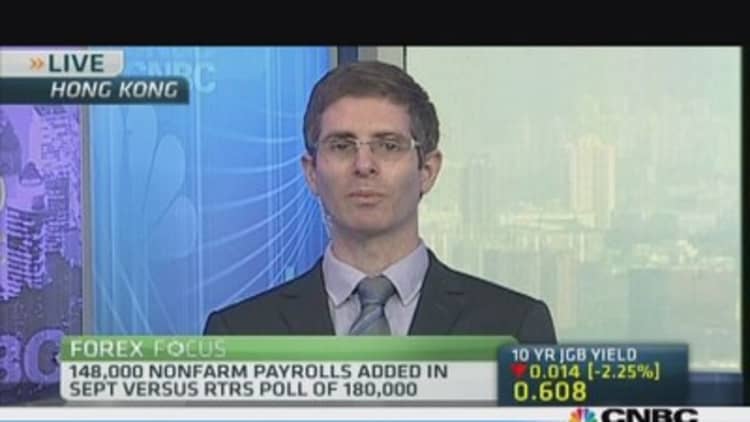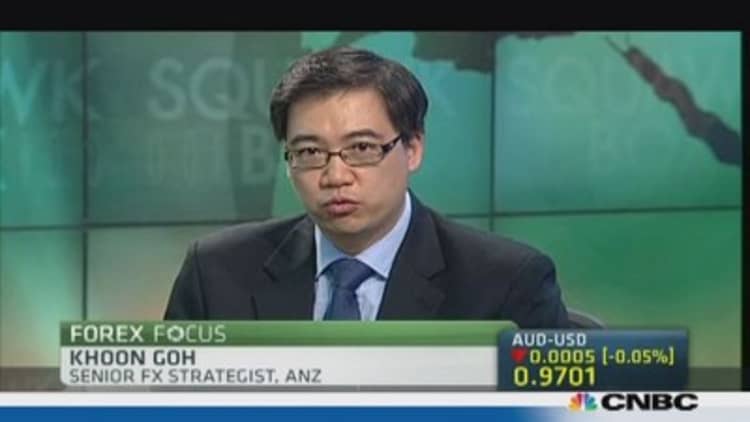Expectations that the Federal Reserve will keep its easy-money program in place into 2014 have created the "perfect" environment for a revival of the carry trade, say foreign exchange strategists.
"We have conditions that are perfect - low volatility [and a] low interest rate environment. It means that currency traders are going to be looking for risk, high beta and interest rate differential trades," said Peter Rosenstreich, chief foreign exchange analyst at Swissquote Bank.
(Read more: March 2014 most likely date for tapering: Goldman)
There is already evidence of increased carry trade activity since September 18, when the U.S. central bank surprised markets with its decision not to taper its asset purchases, say market watchers. A carry trade is when investors borrow in a low yielding currency, such as the yen, to fund investments in higher yielding assets somewhere else.

Nizam Idris, head of strategy, Fixed Income and Currencies at Macquarie cites the Indian rupee as an example of a currency that is benefiting from this trend. The rupee has appreciated around 3 percent against the U.S. dollar since the Federal Open Market Committee met last month as investors look to take advantage of higher interest rates in India.
"For now, in Asia, the Indian rupee and Indonesian rupiah are looking quite attractive in terms of carry - interest rates there are still quite high. Outside of Asia - people are looking at Turkish lira and ," he said. India's benchmark interest rate, for example, stands at 7.50 percent, while Indonesia's is 7.25 percent.
(Read more: Emerging market reprieve is only temporary: Pimco)
Among the most popular funding currencies at the moment are the U.S. dollar, Japanese yen and , Idris said, noting the Taiwan dollar is less volatile than most emerging market currencies and has even lower interest rates than the U.S.
Idris' favorite trades, however, include shorting the Singapore dollar against the Malaysian ringgit, and shorting the U.S. dollar against the Korean won.
As for other high yielding emerging market currencies he noted that there are risks. Brazil, for instance, offers higher yields but the country's central bank isn't too keen on seeing its currency appreciate, which presents a potential risk.

Khoon Goh, senior FX Strategist at ANZ, who notes that prevailing theme for FX markets heading into year-end will be seeking yield via carry trades, says his top trade is shorting the yen against the .
(Read more: Taper talk sets tone for down and out dollar)
"It's one of those classic high-yielding carry trade strategies. The New Zealand economy is actually performing pretty well and the RBNZ [Reserve Bank of New Zealand] looks on track to be the first G-10 central bank to be hike rates early next year," Goh said.
Strategists, however, warn that increased carry trade activity may not last beyond the next two quarters.
"Taper has been delayed, so carry trades will become fashionable, but this may not be for a long time," said Idris.
(Read more: IMF cuts growth forecast for emerging world)
"Carry trade is highly dependent on Fed taper. If money is free like it has been since 2009 when central banks started printing money, then the opportunity cost of not investing is high. When money is longer free you need to look at valuations, and not just anything that gives you a yield," he noted.
—By CNBC's Ansuya Harjani; Follow her on Twitter @Ansuya_H


